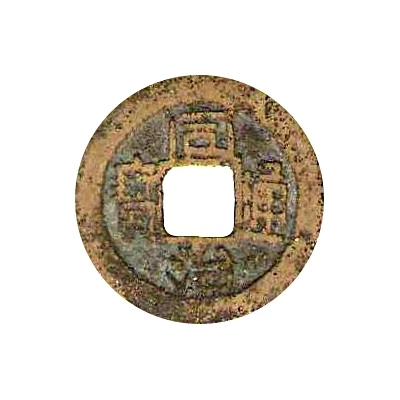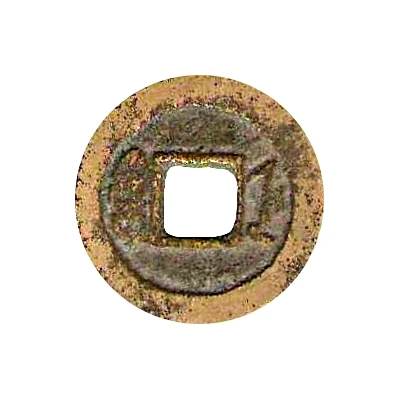1 Cash - Tongzhi Tongbao; Boo-joo ND
| Brass | - | 24 mm |
| Issuer | Empire of China |
|---|---|
| Emperor | Qing dynasty › Tongzhi (同治帝) (1861-1875) |
| Type | Standard circulation coin |
| Years | 1862-1874 |
| Value | 1 Cash |
| Currency | Cash (621-1912) |
| Composition | Brass |
| Diameter | 24 mm |
| Shape | Round with a square hole |
| Technique | Cast |
| Orientation | Medal alignment ↑↑ |
| Demonetized | Yes |
| Updated | 2024-10-03 |
| Numista | N#226684 |
|---|---|
| Rarity index | 100% |
Reverse
Two Manchu words (read vertically) separated by the hole.
Script: Mongolian / Manchu
Lettering: ᠪᠣᠣ ᠵᡠᠣ
Translation: Boo-joo
Edge
Plain
Comment
The type without any reverse marks is reported, but no pictures have ever been illustrated.The exact location of the 'Boo-joo' mint is unknown, although the various types of reverse symbols indicate somewhere around Yunnan, Guizhou, or Sichuan. With many symbols also beeing found on Yunnan-fu or Dongchuan coins, it is possible this is a local mintmark from the Yunnan (similar to Boo-dung).
Another Boo-joo was used under Xianfeng, although that mintmark does not include a dot. It is possible the dot is correcting the spelling from the Xianfeng coins, or it is an entirely different mint.
Interesting fact
One interesting fact about the Tongzhi (Tongbao; Boo-joo) coin is that it was the first coin to feature the portrait of an emperor, specifically the Tongzhi Emperor, who ruled from 1862 to 1874. This was a departure from previous Chinese coins, which typically featured symbols or characters representing the emperor's reign. The inclusion of the emperor's portrait on the coin was seen as a symbol of the emperor's divine right to rule and his connection to the people.

